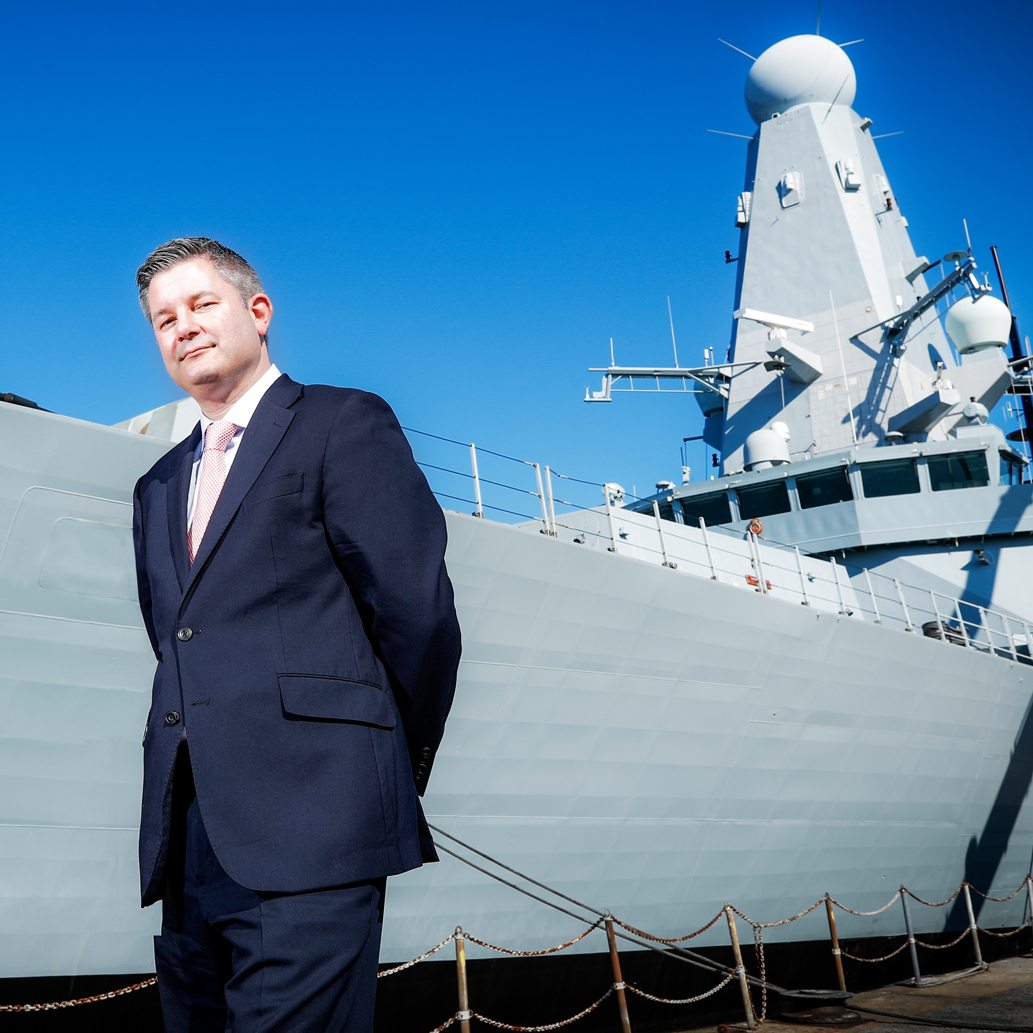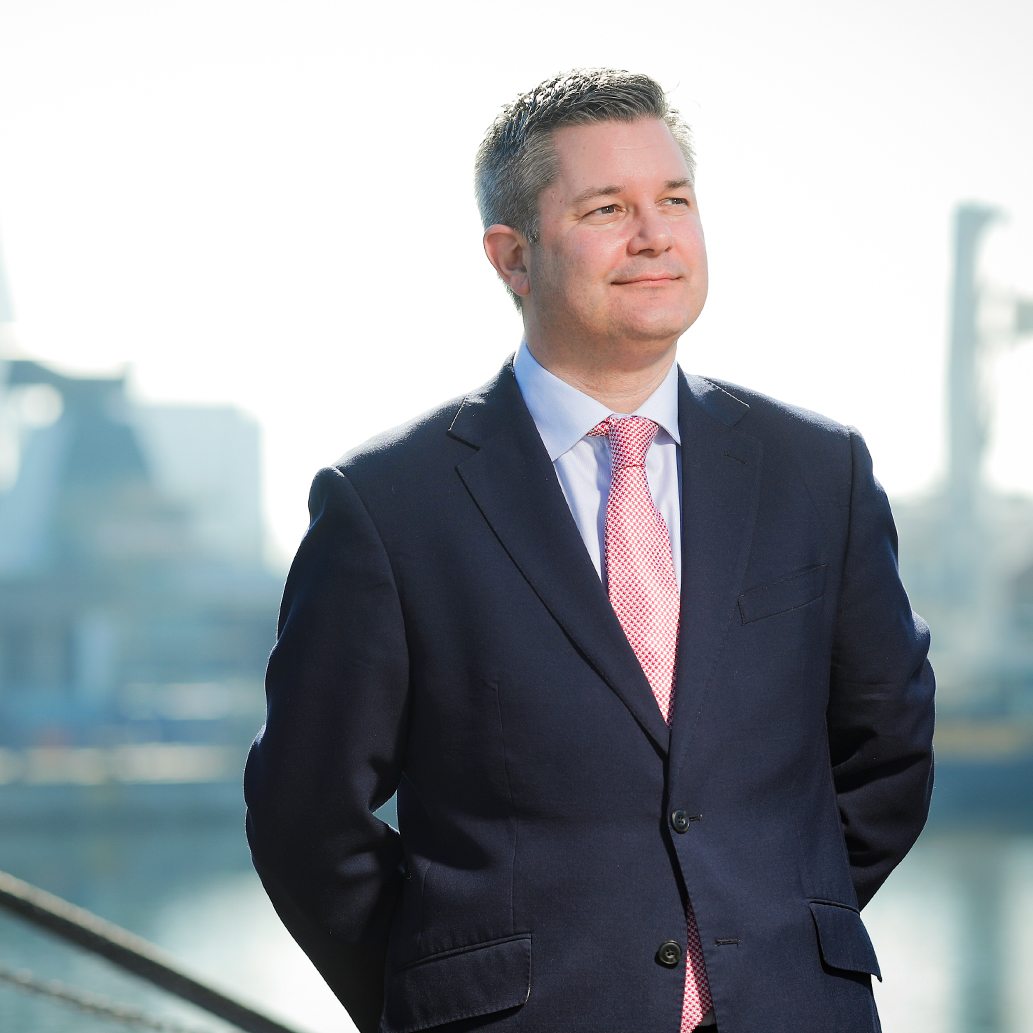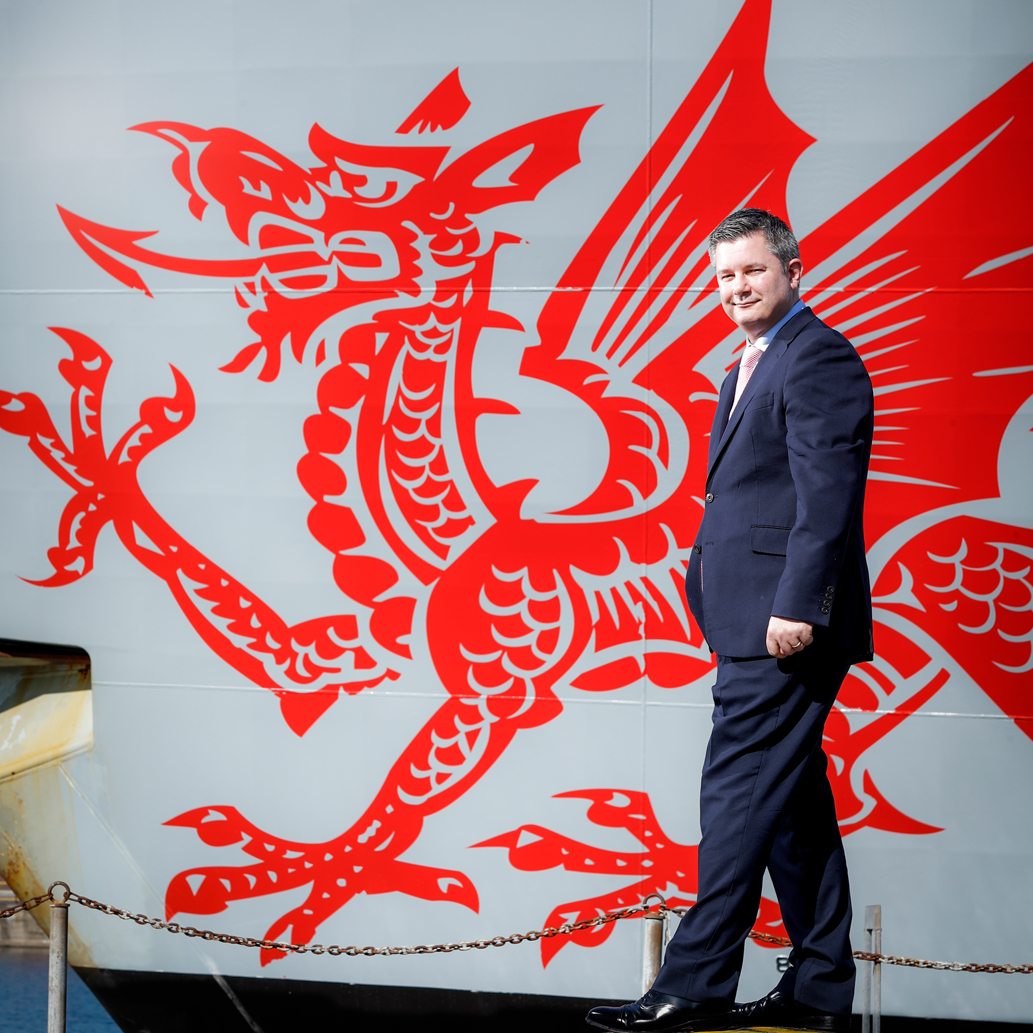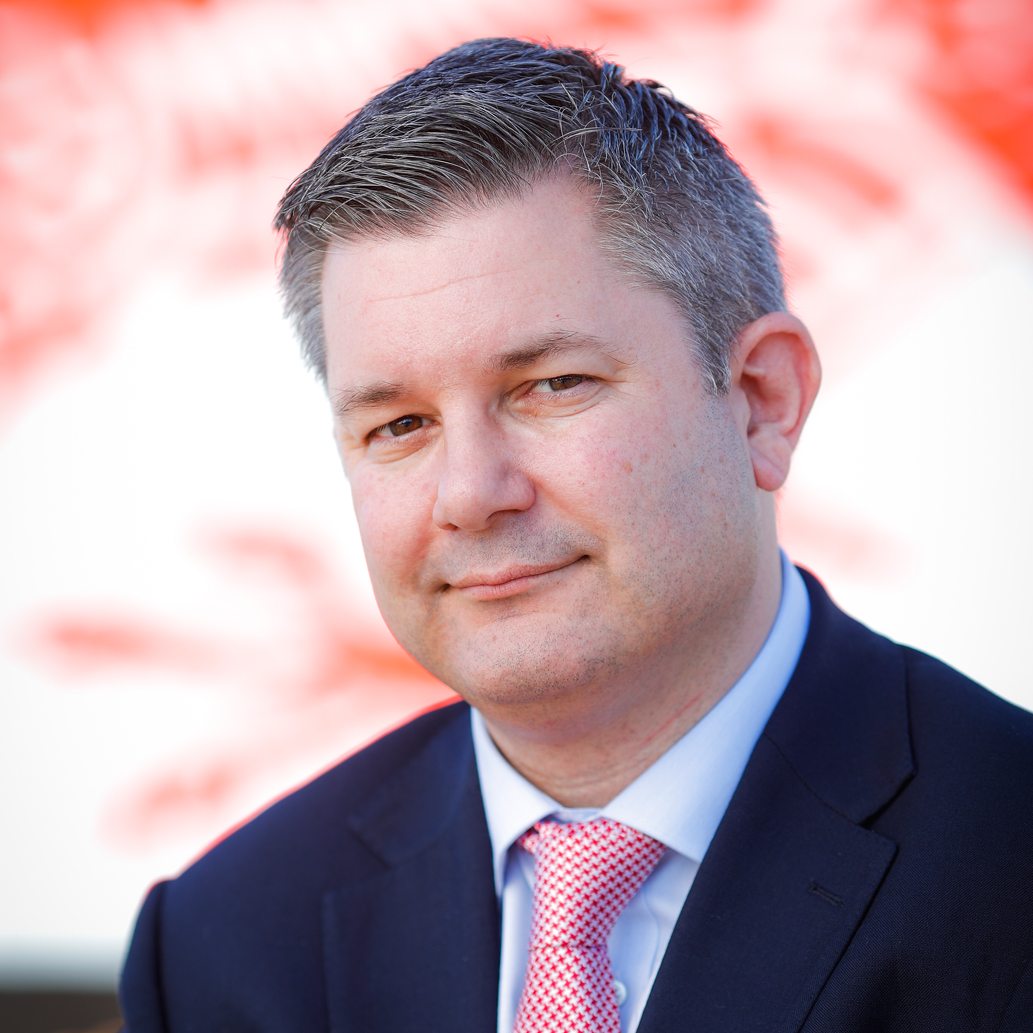Alex, tell us an about your early life and career.
By chance, I studied for a degree which, it has since transpired, was nicely suited to HR, combining economics and psychology. This was at Kingston Business School, and the human behaviour elements really struck a chord but, I must confess, at that point, a future in HR as a career was far from my thoughts. Throughout my school years I had done several holiday jobs in shops and factories, and an abattoir! For one so young, I was perhaps uncommonly interested in the structure of the team and how that worked, so I guess, without really knowing it, I had a natural instinct for HR. Following my degree, I took a full time CIPD course and then my first job was really a stroke of luck. It was at Siemens, in personnel, and I had a boss that could see a chink of possibility in me, and consequently gave me a lot of scope. Having proved that I had some potential I was made HR officer at Siemens, responsible for about 400 people, in a research facility focussed on developing the first-generation mobile phones. I was entirely responsible for recruiting highly technical engineers to work in mobile telecoms, and I learned fast the core recruitment skills, negotiating contracts on-boarding and integrating personnel. The pace was unbelievable and the competition with other Telco businesses was ruthless. During my two years at Siemens, I was migrated over to leadership development, which exposed me to even higher levels of complexity. After two years, Siemens moved me on to a huge manufacturing tech operation in the Northwest of the UK. Looking back, this was a key point of my development, and introduced me to business transformation. The company had a technology application, aimed at industrial automation, and they had just established that this could be applied in consumer goods. They went from eight, maybe ten units per year, to about 400,000 per year. So, as transformation goes, this was massive. This was also my first experience working in a leadership team, transforming the whole process, including; organisation design and the jobs and culture that needed to be integrated to change a traditionally vertical business into a horizontal one. I was making it up as I went along, and that was no bad thing, because it made me resourceful and confident, and I was growing in sophistication, getting to grips with cuttingedge people management tools.
Since then, I’ve held numerous roles in the IT, automotive, aerospace and defence industries, and the one constant throughout all of these, is continuous business transformation. There is no “business-as-usual” expectation in technology-driven markets, you’re constantly challenging the status quo and bidding to keep up. It’s an exciting ride, and it puts you in a position where there is clear context for change and, inevitably, HR is central to the change imperative. It is simply not possible to make change without fully-engaged, properly organised and skilled people. I also saw how leadership is the determining factor to success, and that has stuck with me. I moved on to another role in Siemens, where I was HR lead for their rail business in the UK, in rail communications, signalling and rolling stock, at the time a fledgling element of the corporation, but today a huge presence in the UK rail industry, of course.

Tell us about your next move?
I moved to Airbus, a week before the 9/11 terrorist attack. I was based primarily near Chester and regularly travelled down to Filton and, in fact, I was stuck in traffic on the A38 when I heard that one, and then two airlines had flown into the Twin Towers of the World Trading Centre. Devastating on every level, of course, and I was a few days in a new role for a commercial airline manufacturer. The shock waves rippled across the world, and the full implications for the airline industry began to sink in at the same time as the terrible human cost. It was tough, the industrial shock was on an unprecedented scale, and Airbus was about to launch the A380. How on earth were we to formulate a corporate plan, in the wake of such a devastating event? There was a programme of transformation which was already in place at Airbus and it would go from being a contextually small player, to eventually becoming even bigger than Boeing. I started off as the HR lead of the Broughton facility and the focus was to make Broughton and its 8,000 strong team a high performing business. Previously if you ranked all the plants Airbus had, Broughton was towards the bottom and we managed to get to the top. During a rapid period of growth, Airbus had introduced countless production changes, new tools and systems, many of which were forced in, without consideration and consultation with the people involved, and I came in at the point where the workforce was being brought online, and the atmosphere and feedback was not good. The changes were having some limited short term effect, but were not sticking. We had to start again and focus on a concerted period of consultation, making sure everybody understood the mission and how it was relevant both to them, and their job role. Having worked through the mission, we then worked with leadership, so that the enablers were in place, starting first with resetting the expectation for leadership and redefining what good leadership looks like. What I learnt was, there are three steps to business transformation, and first is engagement, getting everyone involved to the point they feel personally implicated in the success of the transformation at the earliest stages of what is happening. Then alignment, ensuring everybody (and most significantly those involved) realised their role and responsibility, through objective setting, the correct organisation, and setting talent, reward and recognition markers. Once you have alignment your focus is on capability and that is training people in every aspect of the operation from tools and tech to health & safety and quality. I have seen many businesses look to introduce the tools and systems associated with business transformation and question why the seeds of the change are not taking root. What I learnt at Airbus was that it is engagement and organisation of people that creates the fertile ground for changes to grow and ultimately sustain.

And culture of course plays a key role in success.
It’s there, written through everything you are trying to achieve, and the point about engagement again is, it’s something we need to be careful not to overcomplicate, it is about, to all intents and purposes, the shared purpose. The new model at Airbus supported a shared purpose, the workforce made the change happen, and leadership sponsored that change. The unions remained the voice of the employees, but because they were fully aware of the objectives and were fully consulted, they played an integral role providing checks and balance. The improvement was immeasurable. It’s what we now term the inverted triangle.

Tell us about your move to BAE and why the role appealed?
With seven years at Airbus under my belt, with posts in the UK, across Germany and France, I joined BAE. By coincidence, my old boss at Airbus moved to BAE, and he set out the business transformation that needed to take place in BAE’s Aircraft facilities at Warton and Samlesbury near Preston. The sites manufactured the Eurofighter Typhoon military aircraft and were just about to start work on the F35 combat air programme transferring learning and practice from Typhoon production. The business plan was to provide the Eurofighter Typhoon internationally which relied on the aircraft being produced to world beating levels of efficiency and reliability. But, at the time, it was neither cost competitive nor efficient. I joined the business in Preston on the Monday, with a long list of plans and objectives ringing in my ears from my initial briefings, only to be confronted by a ballot, overwhelmingly rejecting the plans. At least this was familiar territory! We had little choice but to go back and examine why the changes had been rejected so vehemently and comprehensively. This was another lesson learnt, that it’s so easy for management to assume there’s an understanding, but in this instance, this was to prove a time-consuming and costly assumption. We spent the next three months in very intensive dialogue with pretty much all 12,000 people, working around all shifts, seven days a week and with the trade unions around the table, eventually gaining a good understanding of the disruptive issues. With the workforce fully on-board, we got to a place where we had a better understanding and then spent the next nine months co-creating, with the workforce, what the solution should look like. We managed to include what the workforce wanted; a greater degree of involvement and ownership, a balance between personal progression and commitment to continuous improvement and an opportunity to influence the way that changes to working practices and improvement methods would be introduced. Why would any company not want that to happen? We were only too keen to harness everyone’s skills and experience into problem solving and continuous involvement. The cocreation process was scientific; we had a database of every single employee and made sure every employee was involved in events to make things happen. At the end of the nine months everybody felt like it was their project. We then introduced a personal development programme for them to sign up to which fed into a wider package of change. We had over 99 percent take-up, and in reality, it wasn’t that dissimilar to the original proposal that was entirely rejected. Eight years on and the same energy and positivity is still there.
You were involved in the UK’s Engagement Taskforce.
Yes, this was a response to the fact that the UK’s productivity lags the other G7 countries, and it was agreed that workforce engagement in UK PLC was an integral issue of concern. It followed the milestone McLeod Report into Engagement and Productivity in the UK and this report had so much impact that the then Labour Government asked David McLeod and Nita Clarke to put together a Task Force to introduce improvement across UK industry. There about 15 members of this group, from big FTSE companies, SMEs, and leaders from the public sector.
Tell us about your appointment as HR Director at BAE and the big and current challenges in the military.
This is the Maritime division, where we design and build the platforms for the UK Navy. We have about 17,000 people across sites in Glasgow, Edinburgh, Barrow in Furness and here in Portsmouth, where we design, build and support the UK Submarine and naval warship fleet. The defence industry is dominated by big public procurement programmes, whereby the customer is looking for higher standards of programme performance both in terms of delivery reliability and value for money. This requires expertise and collaboration across what are generally complex and interdependent supply chains. Increasingly, we are being asked to work as part of alliances to deliver a big public procurement programme. This is a mechanism to ensure that all parties – including companies who are more used to competing for work and are contractually incentivised to work together in a common interest to drive performance and value for money. For example, we are currently involved in the production of two huge aircraft carriers for the UK, which is a collaboration that drives a different dynamic on how we operate as a business. HR plays a key role in this as getting strong, often competitive cultures to truly collaborate is another fascinating element of culture change which often, like in Mergers and Acquisitions is the make or break issue for programme performance. This is particularly the case in what we do – generally huge programmes with unimaginable levels of technological complexity.
Looking at the global picture, how is BAE Maritime competing against international competition?
BAE Systems is in a strong position, much of which is down to the fundamental people capability in our business. This allows us to invest and as an example, our submarines business in Barrow in Furness now has a thousand apprentices, which is fantastic for the future of the business and the local areas, of course. We have strong levels of engagement across our company, but it is interesting to see how a different generation sees this. Our Graduates and Apprentices don’t feel grateful to work in engaged environment, they absolutely demand it. If our new generations cannot find a shared purpose they will simply go elsewhere. Our young employees simply do not understand or buy into the concept of hierarchy and are looking to their leaders to help them not instruct them.
Which means you have to calibrate your proposition to them.
There is much debate that you can’t rely on long-term loyalty from the generation coming into the workforce. I don’t agree with that, I agree it’s a risk, but I fundamentally believe if you give people an environment where they can grow and achieve what they want to achieve, you will keep them, but you must work harder because they are more demanding. If they are involved with cutting-edge technology or problem-solving you keep their interest too.
In terms of the business is there concern surrounding Brexit?
I imagine it will change your markets. Where do you think, the challenges are? I don’t think the challenges are contained within Brexit alone. We are living in an increasingly volatile world. But I take a simplistic view of this, it is our responsibility to develop an agile organisation, capable of reacting to change and you need everybody contributing, you can’t afford to have complicated hierarchies of decision making. As we’ve discussed in the interview, you can’t have a situation where the leadership team understand the direction and the workforce don’t. Businesses that succeed have a lot of engagement and coherency and the ones that don’t, where the managers control the knowledge, will inevitably fail. This isn’t about communication, it’s about dialogue. It reminds me of the saying “you are born with two ears and one mouth”. All-too often, people confuse engagement with communication. It’s not about sharing information it’s about discussing it. A shared purpose is only shared if it is relevant to people, and here middle management is quite literally pivotal to this being achieved.
But there is a marked difference between organic and forced change.
I’m not sure there is. The change I was involved in at Siemens, Airbus and BAE, was a mixture of forced and organic. I think that companies must take action to drive culture change and I think the HR profession has a central role and responsibility to lead that action. Once you are clear what you are trying to do, and you have taken the measures to get people on song, it’s not that difficult. Every employee and workforce, I believe, want to be involved and take responsibility. As a manager, it’s about supporting and developing people to achieve. That is much more effective than holding on to all the knowledge and making all the decisions.
And what seems to separate the generations is the incoming want constant change, and the outgoing tried to avoid it.
Years ago, we used to talk about burning platforms. There is change and there is sustainable change and I don’t think sustainable change is achieved through burning platforms. First you engage, then organise and then drive capability. Engagement without organisation is enthusiastic chaos. I’ve seen that, and I have seen the mess it causes. In many of the organisations I have worked in, and certainly many I have worked with the organisation design, it is a significant disenabler to business performance. I have worked in customer and service focused businesses where the energy in the business is focused around getting approval from the internal hierarchy, by which time the ‘moment of truth’ with the customer is lost. I have also seen many businesses where problem solving and productivity is reliant on specialists from a range of functional disciplines working closely, when actually the organisation design drives a situation where these experts rarely meet, let alone jointly problem solve. Organisation and alignment works at individual, group and company level. When it is right it can be a powerful enabler to engaged employees doing what they naturally want to do – get problems solved quickly and ideas implemented efficiently to delight internal and/or external customers. HR is in the driving seat here and plays an important role in all aspects of engagement, organisation and capability. Nothing good comes from burning platforms, only burnt feet and a necessity to jump at all costs. The bottom line is, everybody wants to be part of a successful endeavour, be involved, who wouldn’t?
What are the coming business objectives, and how are you shaping HR to meet the commercial demands with appropriate resourcing and capabilities?
I could fill your magazine a hundred times over. Our challenges are many, varied and very big. This is an enormous business, and we want and need to grow, extend our footprint, and improve on the delivery in a consistent way to our customer. Plus we need to execute our programmes in an improved and efficient way. Before we change a culture, we need to understand what the current problem is. The engineering process won’t develop a solution until it understands the root cause of the problem. That’s something we in HR need to improve on, having an empathy for that people dimension is something we must bring to the table.












